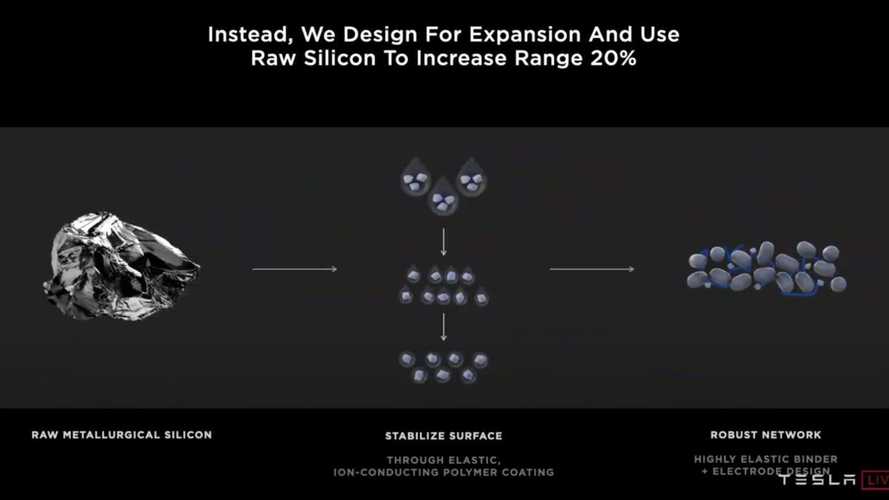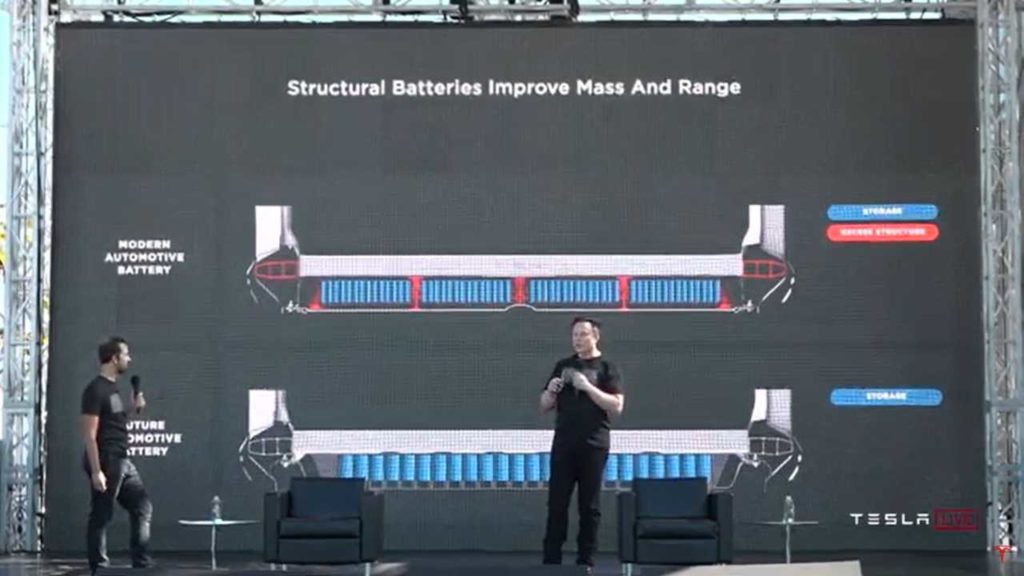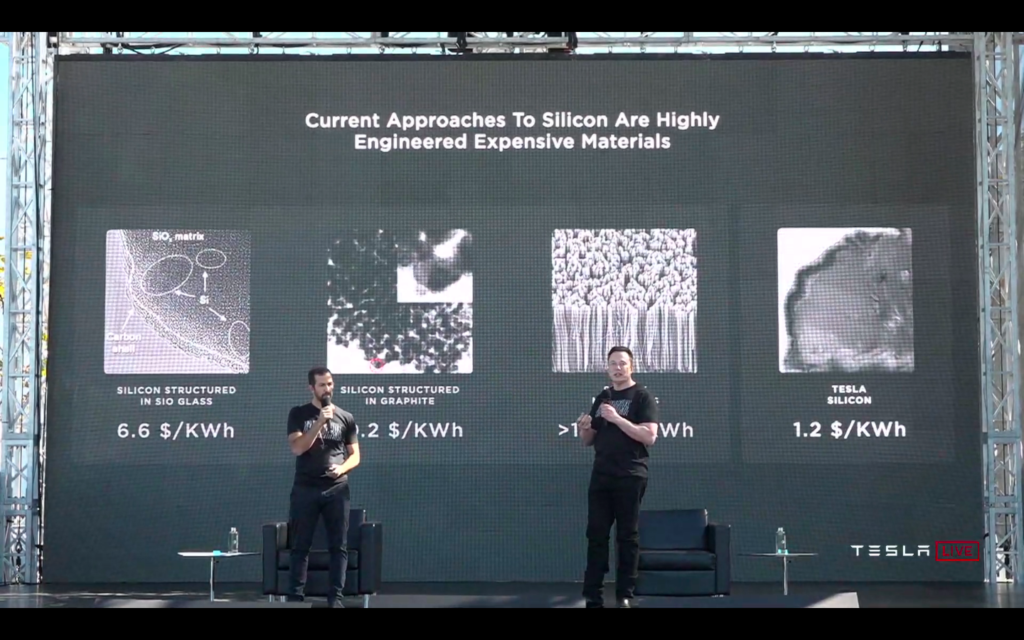While all the “Tesla Battery Day” headlines have been grabbed by the company’s new 4680 cells, efficient terafactories, the new affordable $25,000 electric car coming in 2023, and the performance-minded Model S Plaid, these are not all the novelties that the company has presented during the event.
One of the most exciting announcements has been the confirmation that Tesla will use metallurgical silicon in the anodes of its batteries, which will reduce the packs’ production costs by 5% and increase the autonomy of its electric cars by 20%. If we add to these other measures, such as 4680 cells, a total cost reduction of 37% per kWh will be achieved.
Typically, the silicon used in the industry has been highly processed through costly treatments to function correctly in various applications. The biggest problem with this material is that it tends to degrade enormously without proper treatments when used in lithium batteries. Tesla may integrate the cheapest raw metallurgical silicon into its batteries by stabilizing it using a low-cost ion-conducting polymer embedded in the electrode with a highly elastic binder.
On the other hand, Tesla has announced that it will enter fully into the mining sector, as the company has secured the extraction rights of a 10,000-acre lithium clay deposit in Nevada. According to Musk, the firm has managed to develop a new lithium extraction process that is more sustainable (all the elements involved will be reusable, and the environmental impact will be minimal) and affordable using sodium chloride. Also, the mine’s proximity to the brand’s production plants will allow for an exciting cost reduction.
Last but not least, the company has announced its intention to integrate battery packs into its vehicles’ structure, something that will be possible thanks to the recently launched unibody manufacturing process for the Model Y, which allows the creation of large castings from highly castable and high-strength aluminum alloys.
By the end of the year, Tesla will build the rear frame of the Fremont Model Y from a single block (compared to 70 pieces of steel welded together that make up the same structure in the Model 3), while next year, this same process will also be used to produce the front frame of the Giga Berlin Model Y.
Tesla intends to do the same with the center frame, which will also “merge” with the battery pack. The company calls this solution a “structural battery,” as the vehicle structure will serve as the battery housing. Its use will allow a weight reduction of 10%, an improvement in the autonomy of 14%, and a notable simplification of the vehicle (370 fewer parts will be used).
According to Elon Musk, this structure will be much more rigid than that of any current vehicle, including convertibles, which will result in superior passive safety and better dynamic behavior. Besides, thanks to its simplicity, this architecture will allow an appreciable cost reduction. The biggest drawback? Possible problems when replacing cells.



